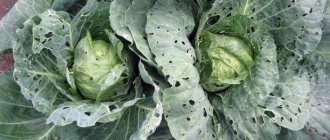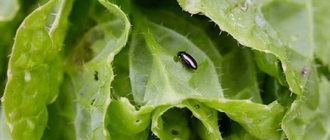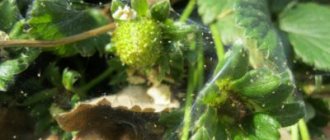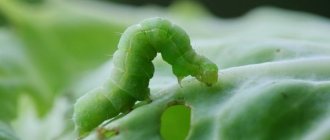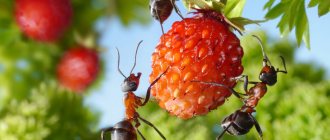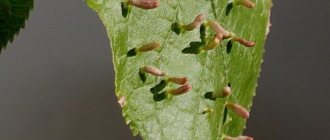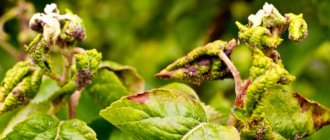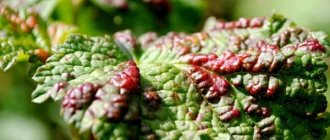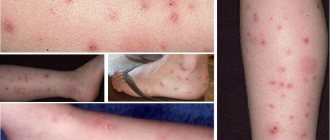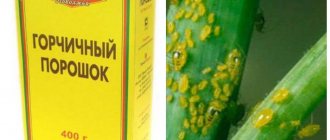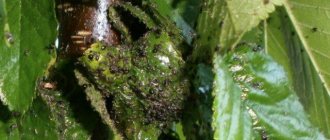With the arrival of spring, we, avid summer residents, rush to our plots to plant radishes, arugula, and early Chinese cabbage. I really want to quickly please myself and my family with fresh vitamin greens! And then she appears - a sneaky, insidious, almost invincible cruciferous flea.
This tiny insect can very quickly turn a leaf of young cabbage into a sieve and deprive us of hope for a quick harvest. The flea beetle is widespread, somewhere there is more of it, somewhere there is less, but one way or another every gardener encounters it every year.
What to do? How to get rid of cruciferous flea beetle? Is it possible to do without pesticides in this difficult struggle? Let's defeat this jumping beast together.
All methods of combating cruciferous flea beetles can be divided into two groups: preventive and repellent. The measures of the first group are aimed, in fact, at preventing the flea from approaching your beds at all. But if an enemy insect does enter your territory, you will have to use repellents.
Features of the view
The cabbage flea is widespread. It is found everywhere where there are cultivated or “wild” cruciferous plants. The only exception is the Far North.
The flea has a small (from 2 to 4 millimeters) almost flat body in the shape of an ellipse. Adult fleas can have different colors: blue, black, green. Also in some varieties you can notice yellow stripes on the body. These pests are excellent jumpers thanks to their strong hind legs. This is where their nickname came from - “fleas”. The larvae are only light yellow in color. Most of all they resemble worms.
There are usually colonies of several species at once. In the northern part it is:
- Lightfooted. Individuals have two colors and yellow paws. The body is bluish or green. On the back there is a black stripe tapering towards the head.
- Blue. Representative of monochromatic fleas. The body is blue, maybe with a greenish tint. The mustache is black.
- Notched. Also two-tone. Seam strips widening in the middle part. It also has yellow stripes with notches.
- Wavy fleas. The black suture stripe tapers greatly to half its width. There are also yellow stripes of constant width on the body.
In the southern part, the most common species are:
- Widebanded - black in color with the exception of the paws and hips, which are yellow.
- Black or southern flea beetles. Representatives of monochromatic black parasites.
Although the spread of fleas due to harsh weather conditions in northern areas is not as significant as in southern areas, the damage caused by insects in this region can be catastrophic.
Insect activity occurs between 10 a.m. and 1 p.m., as well as from 4 to 5 p.m. The damage from one insect is almost unnoticeable: with its teeth it makes ulcers on the surface of the leaves, which gradually turn into holes. Under favorable conditions, the level of reproduction can reach such a limit that more than a hundred individuals will gather on one bush. In this case, the damage to the plant will be enormous.
Catching beetles
Traps are an effective, safe remedy for cruciferous flea beetles. Making devices will not take much time and does not require significant financial costs. How to make your own trap:
- Build something like flags from available materials. These can be pegs with canvas attached or plywood or cardboard blanks. Lubricate one side of the panel with any adhesive (glue, honey, garden pitch, grease). Take the received attribute in your hands and walk with it along the beds, running the lower part over the plants. Fleas are very shy and will begin to actively jump and stick to the sticky fragment. When a fair amount of insects stick, remove them and repeat the process. Exercise with a flag is most effective during hot hours and dry weather.
- Make a cone out of cardboard so that it can completely cover the plant. Also coat the inside with glue and cover the seedlings one by one. A certain part of the fleas will stick to the cap.
- A less labor-intensive option is to lay plywood with glue applied along the beds. When moving along the ground, between plants, insects will stick to simple structures. You can also use a rag dampened with used automobile oil.
- A similar effect is achieved by low, flat containers of water, into which a little kerosene or vegetable oil must be added so that the captives cannot escape from the trap.
Important! Traps with glue, kerosene, and diesel fuel should be removed during rainy periods so that harmful components are not absorbed into the soil.
For which plants is cruciferous flea beetle dangerous?
These pests are most dangerous for the following plants:
- Cabbage.
- Mustard.
- Turnip.
- Horseradish.
- Strawberries.
- Radish.
- Eggplant.
- Raspberries.
- Strawberry.
Do not think that pests only attack edible houseplants. Various flowers can also become their target, especially in times of famine (if there are few edible plants in the surrounding area, or the fleas multiply very strongly).
Signs of parasitism
The presence of cruciferous fleas in the garden is determined by the appearance and condition of the plants. First, even before the visible appearance of individuals, the leaves begin to wither despite abundant watering. This is especially noticeable if fleas are found on radishes or cabbage. Such leaf damage is associated with the appearance of parasite larvae and their impact on the root of the plant, which disrupts its normal functioning.
After the larvae hatch, ulcers and gnawing appear on the leaves. Depending on the type and number of fleas, it is even possible to completely destroy the leaf down to just the veins.
What to do if a flea beetle attacks strawberries?
Many summer residents have noticed that in addition to typical pests (slugs, stem and strawberry nematodes, mites, weevils), sometimes a cruciferous flea can literally attack strawberries. If nothing is done or the presence of the pest is not noticed in time, the crop can be seriously damaged. In some cases, it is eaten clean!
Read on dacha6.ru:
One summer resident on the forum complains: “Having overwintered on autumn green manure, mustard and rapeseed, the flea ate last year’s strawberries and began to try the recently planted ones. Having finished with the strawberries, the pest furiously attacked the raspberries...” A reasonable question arises: how to stop these insatiable insects and save the harvest, at least partially?
How to get rid of insects and prevent reproduction?
Depending on the host's preferences and environmental conditions, different methods of controlling the parasite can be chosen. The level of distribution and reproduction of individuals also plays a role: the more there are, the more powerful the remedy should be. If the number of fleas is small, you can get by with safe agrotechnical (which are more of a preventive) methods or folk remedies. If these methods do not work, then you should immediately start using a store-bought chemical flea repellent on cabbage and other plants.
It is not possible to use chemicals always and not everywhere. For example, it is strictly forbidden to do this if there are hives with bees near the site. To poison fleas safely and harmlessly to humans, you must carefully read the instructions for the medications.
Reviews from gardeners
SvetlanaK
Ash helps well, but it needs to be powdered on the plants; simply pouring ash next to the plant is a fertilizer; for protection it must stick to the leaf. While the plants are very small, it is good to keep them under a non-woven covering material, and when they grow up, dust them with ash every day.
Source: dv0r.ru
Ryabinkina
Among the folk remedies, dry mustard powder and ground pepper help a lot. I use ash after spraying the leaves with regular water from a spray bottle to ensure good adhesion.
Source: websad.ru
Effective remedies and preparations for fleas
There are a large number of chemical compounds against parasites on the market. The most suitable and proven means:
- "Diazinon". The drug is used on the soil surface in the spring when plants are planted in it. After this, the soil at the planting site must be “sealed.”
- "Imidalit." A composition that is more suitable for measures to prevent the appearance of fleas. The seeds are treated with the product. This is done either some time before or immediately before placing the seeds in the ground.
- "Decis". The drug is universal and can be used against almost all types of garden and garden parasites. The form of action is contact-intestinal. In order to achieve maximum control effectiveness, you do not need to use the product at a temperature not exceeding 25°C in the shade. If this rule is not followed, the protection will not be sufficient.
- "Bi-58". Belongs to the category of insecticides. One of the most popular remedies. Can be effectively used against gnawing and sucking garden parasites. Release form in liquid ampoules. Sold as a concentrate, which is diluted in 10 or 5 liters of water.
- "Karate". A composition that successfully copes with a large number of insect species. Plants need to be sprayed during the growing season. At the same time, you need to take measures to protect your health.
Regardless of the success of the effects of the drugs, they must be used strictly at the frequency and in the dosage indicated in the instructions. Excessive use of drugs can adversely affect the condition of plants, as well as affect the human body when eating fruits.
Cabbage moth
The cabbage moth is a nocturnal moth with a grey-brown protective color.
Its dimensions with a wingspan reach 14-18 mm. The butterfly emerges in May. She lays eggs on the lower part of the leaf blade. A week later, green caterpillars about 1 cm long appear from them. They feed on the pulp of radish leaves.
Control measures
. First of all, it is necessary to scare away the butterflies in order to prevent them from laying eggs. Spraying with a tobacco solution (200 g of dried tobacco leaves / 10 liters of boiling water), a decoction of citrus fruits, and lavender will help with this.
You should not neglect the destruction of weeds, since they often become breeding grounds for parasites. Since butterfly pupae die at a temperature of +4 °C, it is necessary to dig deep into the soil before the cold weather so that they appear on the surface.
Fertilizing with superphosphate and calcium chloride has worked well. If necessary and there is massive damage to plants (more than 10%), biological and chemical preparations are used. However, it should be remembered that during fruit ripening, spraying radishes with such means is prohibited.
Agrotechnical control measures
Agrotechnical methods are used to prevent and control insects. These include timely planting, weeding and watering. This also includes planting helper plants. As an emergency measure, sheltering seedlings is used.
Landing dates
In order to reduce the impact of parasites on the leaves of seedlings, it should be planted before or after the onset of the main stage of development and hatching of the larvae. The most favorable time for planting early varieties is April, for late varieties – July-August. By the time the fleas appear, the April seedlings have time to take root and gain a foothold in the area, and its leaves become coarser. Due to the peculiarities of the life cycle of insects, they do not have time to cause significant harm to July seedlings.
Weeding
Another agricultural control method is to deprive pests of a place to live. This is achieved through regular weeding and other means of removing weeds, which are favorite places to live. You also need to remove tops and weeds from the site in the fall after harvesting. Otherwise, insect larvae will certainly appear in it in the spring.
Watering
You can get rid of cabbage fleas by increasing the humidity. These pests love dry air most of all. Therefore, timely and frequent watering can curb the spread and reproduction of fleas. Helper plants
You can also use helper plants that naturally repel pests. This happens because these crops are rich in essential oils and have a strong odor that fleas do not like. Phytoncidal crops include:
- Calendula.
- Marigold.
- Nasturtium.
- Coriander.
- Caraway.
- Fennel.
- Dill.
The effect will be achieved only if these plants are planted around the entire perimeter of the vegetable garden or garden.
Shelter for young plantings
In places where summers are often hot, a good way to save plants is to use a covering material (this can be a special mesh fabric or non-woven fiber). Covering work is carried out immediately after planting the seedlings in the soil. This method will not only save plants from parasites, but also protect them from exposure to direct sunlight, which can burn the leaves.
Processing technology
Whatever treatment method is used: spraying, watering or spraying a dry mixture, it will be effective only if the product lingers for some time in the soil or on the radish itself. The first superficial watering or rain will immediately wash away the product and will not give the desired result. Therefore, if the radish was sprayed with a medicinal solution or sprinkled with a mixture, then it must be switched to drip irrigation (directly under the roots).
If radishes grow in the vicinity of cruciferous weeds, then they should be watered generously with insecticides - otherwise they will become a breeding ground for insects.
It is better to process radishes in dry and windless weather. Usually such work is carried out in the evening. However, to eliminate flea beetles on radishes, you should choose daytime, since insects are especially active in the heat. Flea beetles can be combated not only with the help of solutions and mixtures, but also with mechanical methods: covering the beds, as well as hanging adhesive tapes to which the insects stick. These harmless measures help you wait until the radishes grow up and fleas are not so dangerous for them.
Folk recipes
In addition to store-bought chemical compounds, the gardener’s arsenal also includes safer folk methods.
Powdering
Over time, people noticed that if they treat cabbage with flea ash, insects do not appear in the treated area. Wood ash is placed in the hole when planting plants. At the end of planting work, ash is also sprinkled between the rows.
To prevent the leaves from being exposed to insects, they are sprinkled with:
- Composition of ash from the kiln and lime (slaked).
- Dust from tobacco leaves.
Spraying
In addition to dry formulations, spraying with solutions according to folk recipes is used. They can be different:
- Garlic and tomato tincture. It is prepared from 250 grams of tomato tops and 10 heads of garlic. They are passed through a meat grinder and placed in 10 liters of warm, clean water. Next, you need to infuse the resulting mixture for 24 hours. The strained liquid is mixed with a small (up to 50 milliliters) amount of liquid soap. This is necessary so that the composition lingers on the surface of the sheet.
- Dandelion tincture. Place 0.5 kilograms of dandelion leaves in 10 liters of warm water and infuse for three days. Then, also after filtering, add 50 ml of soap to the mixture.
- A solution of ash and soap. Add one gram of ash to 3 liters of boiling water. The solution is infused for about two days. After this time has expired, about a quarter of tar or laundry soap is added to the container.
- Tobacco tincture. Add 200 grams of tobacco leaves and a little soap to 10 liters of clean water.
- Chicken manure tincture. Water and litter are mixed in a ratio of 20:1. After fermentation, the composition can be applied.
- Composition with wormwood. Add a kilogram of crushed wormwood to 10 liters of boiling water. You need to infuse the resulting composition for a day.
- Another remedy that must be used with caution is vinegar.
Folk remedies, unlike chemicals, do not have such a strict frequency and dosage (they can be used more frequently). It should be borne in mind that their action may not be effective enough. Therefore, if within a week there are no noticeable results, you should resort to the help of store-bought substances.
How to fight fleas in the garden?
Experienced gardeners will always be able to protect their garden from pests, using not only chemicals, but also folk tricks to combat them.
Use of special drugs
For the destruction of fleas, insecticidal agents known to many are quite suitable:
- Karbofos;
- Aktara;
- Decis;
- Sherpa;
- Arrivo.
Any of the drugs can be purchased at a specialty store. It is best to treat the beds with them in the evening, when the sun has already set. The fleas are still on the foliage.
It is not recommended to use preparations on early ripening crops!
When working with chemical compounds, you should strictly adhere to the instructions for their use.
Use of folk remedies
- a humid environment is the easiest way. You just need to water the beds generously, as the flea beetle does not tolerate damp places;
- method of dry pollination of foliage - performed with a gauze bag, which must be shaken over the plants. You can put wood ash in its pure form or with the addition of tobacco dust in the bag. It is best to carry out such procedures in the morning so that the repellent settles on the foliage damp from dew. The flea beetle is afraid to sit on dirty plants. By the way, row spacing can be treated with mothballs or tobacco dust;
- use of infusions and herbal decoctions:
- ash at a ratio of 1 to 3 is steamed with boiling water and infused for two days. Add laundry soap to the infusion;
- garlic and tomato shoots (one glass each) are minced. Everything is diluted in a ten-liter bucket of water and filtered. You also need to add a spoonful of soap. Before spraying, the solution must be slightly warmed;
- Five hundred grams of dandelion leaves and roots are passed through a meat grinder, everything is poured into a bucket of water, and strained. All that remains is to pour in a spoonful of soap, and you can use the infusion for processing;
Cruciferous flea beetle on cabbage
- Hot water (ten liters) is poured into two hundred grams of tobacco. Pour a spoonful of liquid soap onto the resulting mixture;
- Pour a glass of regular vinegar into a bucket of water. You can replace it with a couple of spoons of essence;
- green wormwood is infused, you can add chopped garlic to the water (one hundred grams per bucket). After straining the infusion, they should water the plants with small droplets;
- four kilograms of potato tops are poured with ten liters of water, everything is brought to a boil. The broth is allowed to cool, filtered, and diluted twice with water. Treatment must be carried out in the evening;
- The same recipe, only tomato stepsons are used.
A simple remedy is to cover the beds with seedlings with covering non-woven materials. They perfectly transmit light, water and air, and reliably protect seedlings from flea beetles.
Make flags from dense material, attach them to sticks, and spread them with something sticky - resin or grease. Flags must be waved over the plantings, barely touching the leaves. The procedure is recommended to be carried out during the day when it is very hot.
After soaking a piece of cloth in machine oil, place it next to the garden bed. It is best if such traps are arranged at intervals of three to four meters. After a couple of days, simply turn the fabric to the other side.
Pest Infestation Prevention
Preventive measures in pest control are of great importance. These include:
- Use of covering materials.
- Removing weeds in which these insects live and feed. These include white mustard, shepherd's purse, rapeseed and others.
- Planting around the perimeter herbs and flowers that have a strong odor that is unpleasant for pests: hyssop, thyme, catnip, calendula.
- In spring and autumn, clean the area: remove tops and weeds, as well as dry leaves, since this is where the larvae overwinter. The leaves also serve as spring habitat for adults until vegetation emerges.
Cruciferous flea beetle on strawberries or cabbage is a very unpleasant phenomenon for any gardener or gardener, which causes great damage to the farm. If the vital activity of these bugs is detected on the site, measures must be immediately taken to combat them. If traditional methods are insufficiently effective, you will have to use store-bought chemical compounds. In this case, you must observe safety rules and follow the instructions. Midge on cabbage: how to treat it and how to get rid of it using folk remedies, read more in this article.
How to deal with flea beetles in the garden
Flea beetles on cabbage
The cruciferous flea beetle can settle on cabbage after the air outside warms up to 15 degrees. To avoid freezing in winter, the pest hides under plant debris or in the top layer of soil. The insect damages all cabbage plants in the same way; it can look like skeletonization, ulcerative gnawing, or interveinal gnawing. Those leaf plates that are very damaged begin to dry out and then die; over time, the plant itself begins to die.
Can cruciferous flea beetle cause damage to cabbage at an early stage of development? Insects injure the surface of foliage and shoots, causing sores to appear, which then become holes. Because of this, yellowing of the foliage begins. Injured seedlings may die within just a few days, especially if the weather is very warm. As soon as the bugs are discovered, you need to immediately begin an active fight against them.
How to save cabbage? It is recommended to treat cabbage that belongs to early ripening varieties exclusively with folk remedies, since they do not contain substances hazardous to humans. So, once a week the bushes should be sprayed with an infusion of tobacco or wood ash, a solution of vinegar or a decoction of tomato tops. And you can spray late and mid-season cabbage varieties with special chemicals, for example: Actellik, Karate, Aktara, Decis or Bankol.
Bugs that have settled on radishes, on radishes, or on other representatives of the Cruciferous family can also greatly harm them. The fact is that if the foliage is injured, the root crop will lose nutrition. The fight should begin as soon as the first pests are detected. In order to get rid of them completely, you will need to carry out several sprayings.
Watch this video on YouTube
